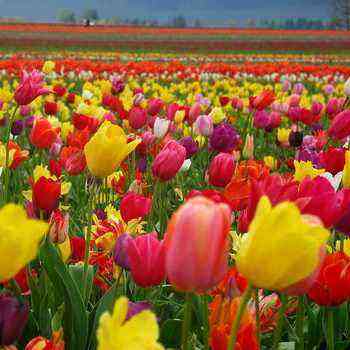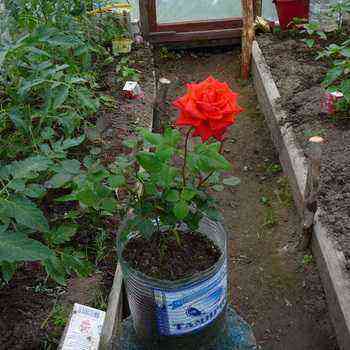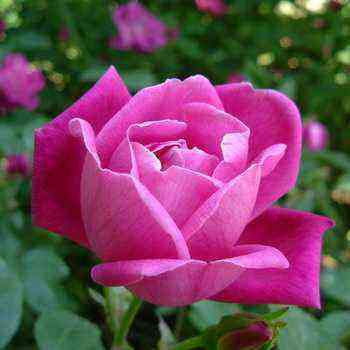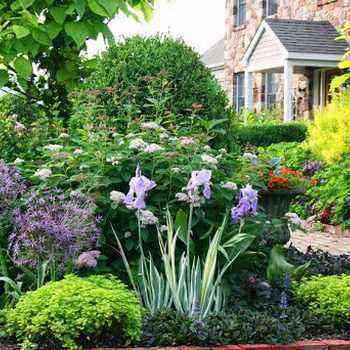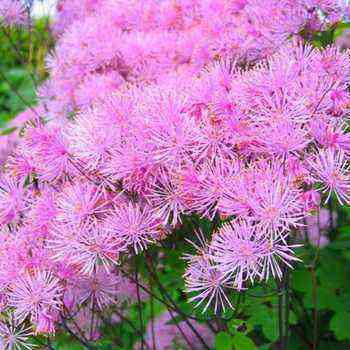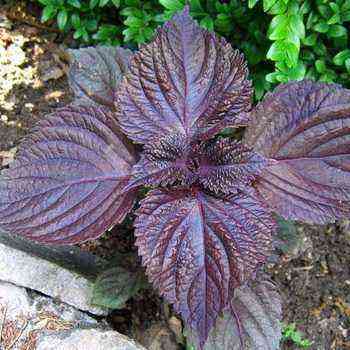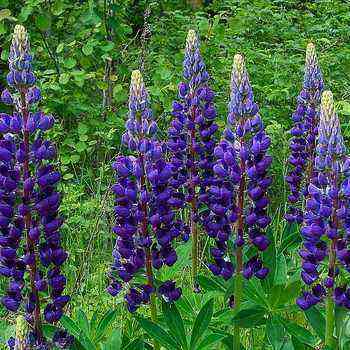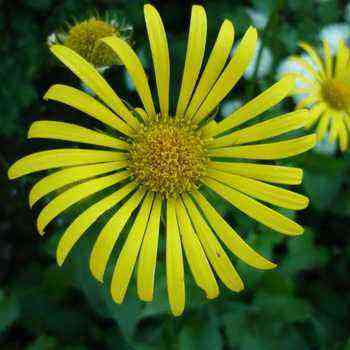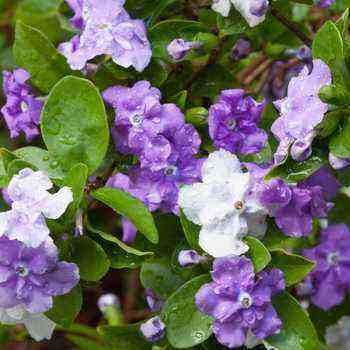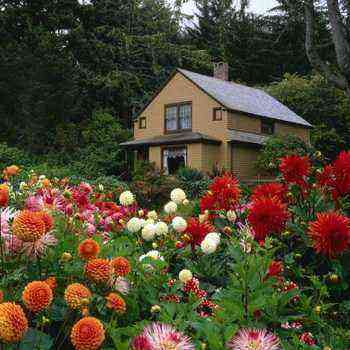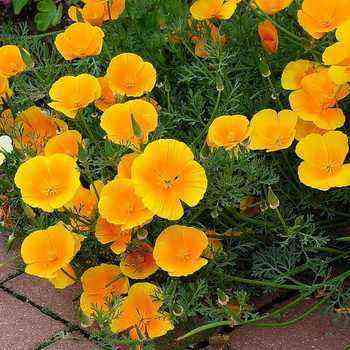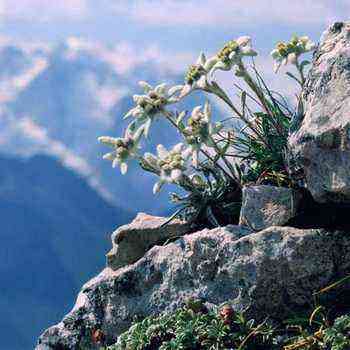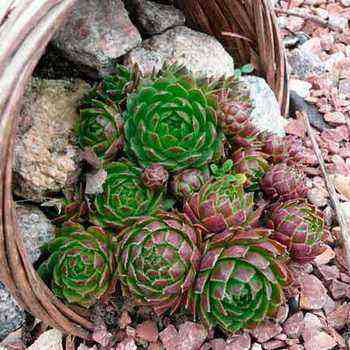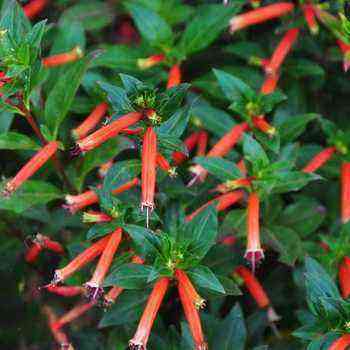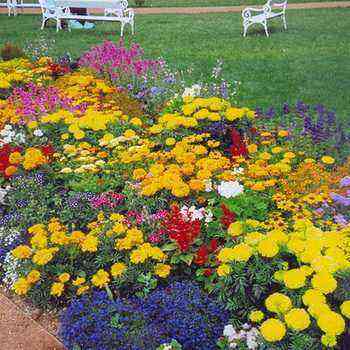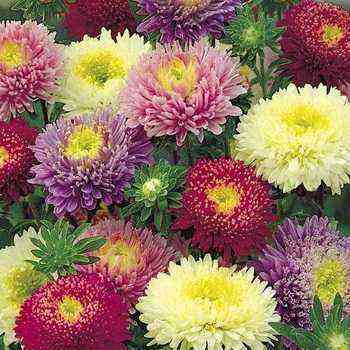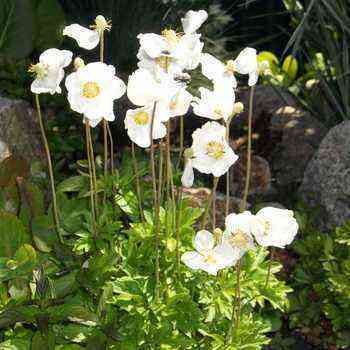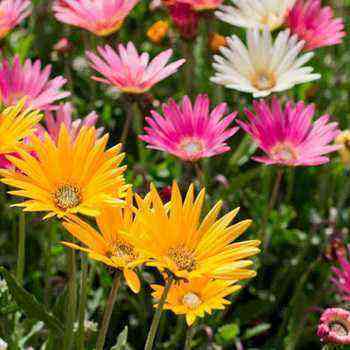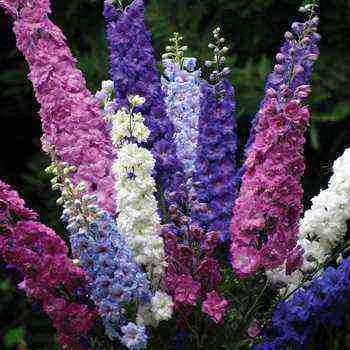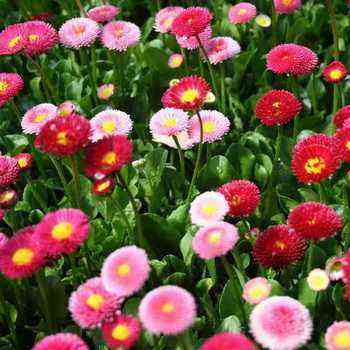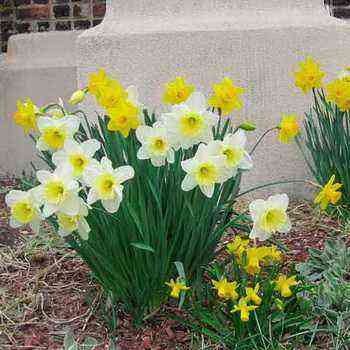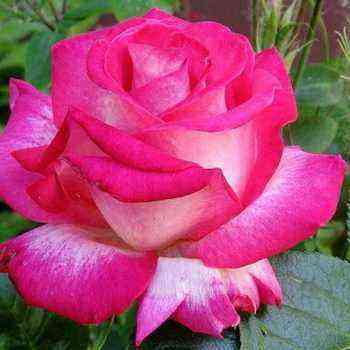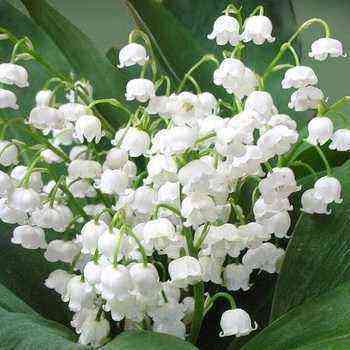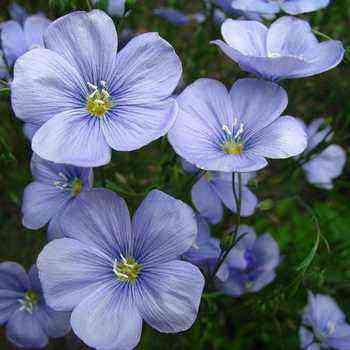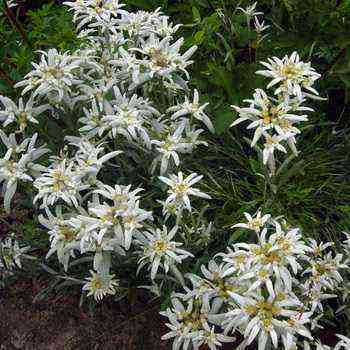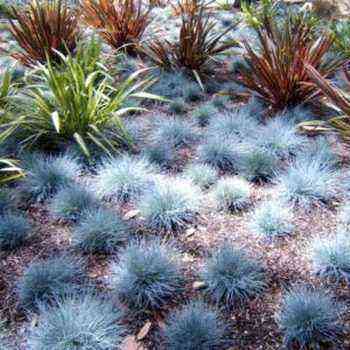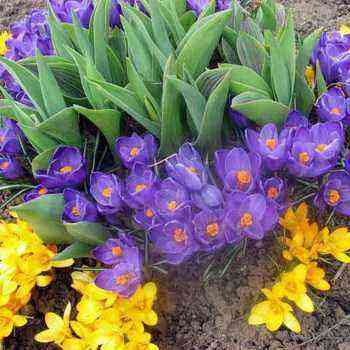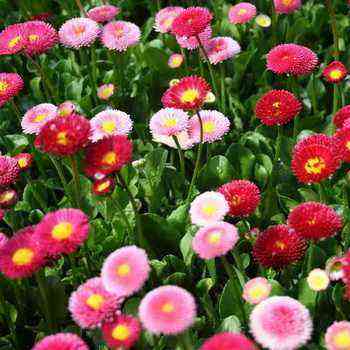 Krinum (Crinum) is one of the most spectacular indoor plants in the Amaryllidaceae family. For the sake of the picture of his flowering, many gardeners tolerate his whims and carefully look after him.
Krinum (Crinum) is one of the most spectacular indoor plants in the Amaryllidaceae family. For the sake of the picture of his flowering, many gardeners tolerate his whims and carefully look after him.
The homeland of the plant is the tropics and subtropics of Asia, Africa, America. It can be found in swampy areas, on the banks of water bodies. Perennial flowering bulbous plant, got its name from the appearance of long leaves: “crinis” in Latin means “hair”.
Bulbs and peduncles of krinum (with photo)
The perennial krinum bulbs (the proposed photo will allow you to examine them more closely) are usually large, 60-90 cm in length, up to 25 cm in diameter, the neck is oblong:
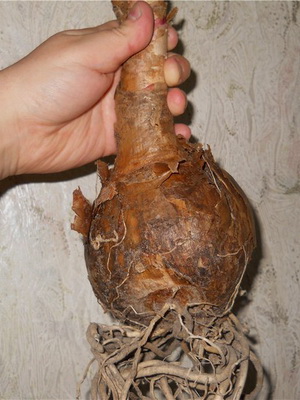
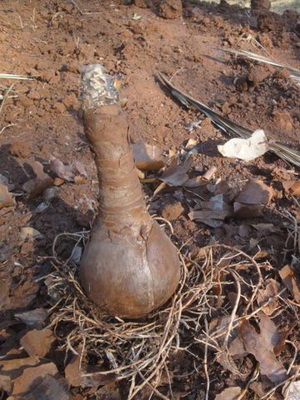
The leaves are evergreen, belt-like, light green in color, up to 1 m long, form a false stem, at the end of which there is a fan – it is created by leaf blades. Young leaves are rolled into a tube. A well-developed plant has more than 20 leaves.

The flower arrow bears up to 8 pinkish drooping flowers up to 15 cm in diameter, united in an umbrella-shaped inflorescence.
The length of the peduncle sometimes reaches a meter, the evergreen krinum flower is pale pink, sometimes with a raspberry tint, funnel-shaped, with a weak aroma. Removing dead flowers can extend the flowering time of the plant. 9-12 leaves are formed between the inflorescences, the inflorescence itself develops only where the leaf blades have already dried up. They stay on the plant for 4-5 weeks.
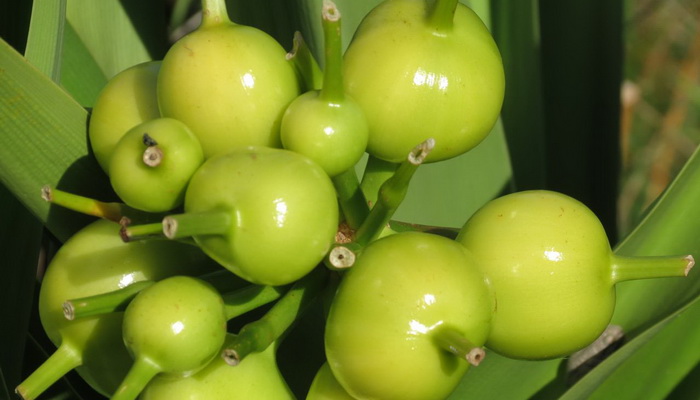
The fruit is a box of irregular shape, inside are large fleshy seeds. The seed coat contains enough water to ripen the seed and form a new bulb.
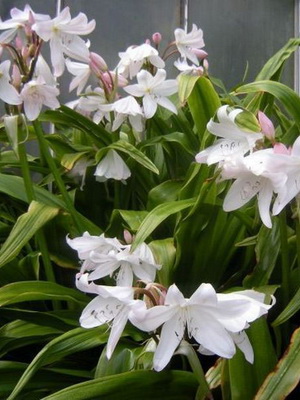
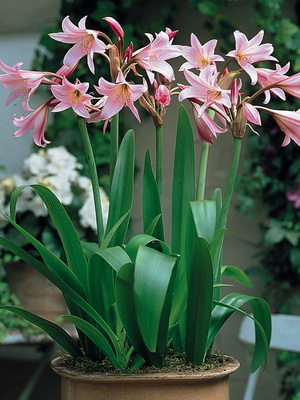
Blooms mainly in autumn. Short day plant. In the conditions necessary for well-being, the bulb lives for a long time. The more the krinum grows, the more territory it will capture.


Serves as an excellent decor for large rooms with low temperatures, both in residential buildings and in public places. Lives well in the winter garden. Some species do well in aquariums.
Types of indoor krinum
Scientists have described more than 150 species of evergreen krinum. In room culture, the following types are most popular.


Crinum Asian (C. asiaticum) , a bulb up to 10-15 cm in diameter. Wide leaves of a curved shape, with a whole edge, about 120 cm. Inflorescence of 20-50 fragrant snow-white flowers, with elongated narrowed petals. Researchers believe it comes from water bodies in West Africa.


Crinum favorite (C. amabile) , medium-sized bulb. Leaves are on average 25-30, a meter and a half long. The inflorescence umbrella contains about 30 flowers. Red flowers shimmer with purple and white shades, very fragrant. Straight petals, their inner side is white, 10-15 cm long. Decorated with purple stamens. Flowering usually occurs in March, sometimes blooms again. The homeland is the distant forests of Sumatra.


Crinum Moore (C. moorie) , leaves of a light green hue, they have a special pattern of thin veins of about 90 cm.The bulb is about 20 cm in size.The flower of such a krinum can be seen in the photo: snow-white, sometimes pinkish flowers, in the form of bells, placed in 6-12 pcs.


Crinum bulbous seed: grows up to 80 cm in height. With wide curved leaves, with a wavy edge, flowers on elongated cuttings, the color is light pink or white. The petals are decorated with a wide red stripe.

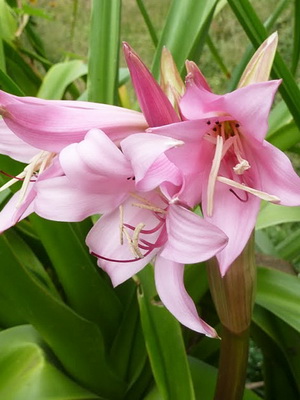
Crinum Powell: is a hybrid obtained by crossing Moore’s crinum and bulbous crinum. The bulb is spherical, up to 15 cm in diameter. Belt-like leaves up to 100 cm in length. It blooms with an inflorescence of 8-12 bright pink or white bells.
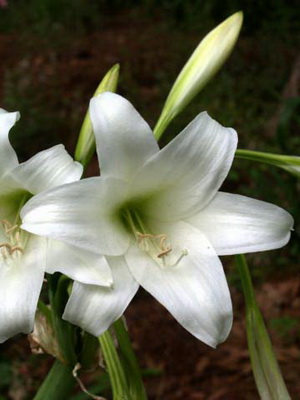

Crinum Abyssinian (C. abyssinicum) . Grows in the mountainous regions of Ethiopia. The bulb is oval, 7 cm thick, with a short neck. Leaves tapering upwards, usually in the amount of 6 pieces, rough edges, length 30-45 cm, width 1.5 cm.


Crinum large (C. giganteum) . A large bulb, veins create a pronounced pattern on the leaf, the leaves themselves fall in waves downwards, 60-90 cm long. Flowers are white, with a distinct odor, 20 cm long.


American Crinum (C. americanum). In room conditions, it is quite rare – because of its size. More suitable for a conservatory or a large room.
Conditions of detention and proper cultivation of bulbous krinum
Requirements for environmental conditions. The peculiarities of the maintenance of indoor krinum primarily include lighting.
In summer, the plant especially needs good lighting, sun and air, is not afraid of direct sunlight, so it is recommended to take it out into the air. In the fresh air, you need to protect from strong winds and possible precipitation. Shading is not at all necessary – when there is more bright light, the plant feels better, grows better. The best place might be the south window. At this time, it is worth making sure that the plant does not come into contact with the window glass, otherwise there is a danger of burns in places of contact. Window sills with an exit to the west and east are also suitable.
In winter, during the dormant period, the krinum is kept indoors at a temperature of 14-16 ° C. In cloudy times, krinum, as a sun-loving plant, needs light more than ever: it can be provided with the help of fluorescent lamps, phytolamps, creating a full daylight hours.
In summer and spring, the most acceptable temperature is 18-22 °, in winter it can drop to 9-12 °. Young plants need a temperature of 16-18 °, they will not be comfortable in cold rooms.


An important role in the proper cultivation of capricious krinum is played by the soil: first of all, it must be nutritious and loosened. The substrate should consist of deciduous, greenhouse soil and sand in a ratio of 2: 1: 1. On the eve of planting, it must be disinfected by soaking with a weak solution of potassium permanganate. A growing container is required with large holes, and there must be drainage at the bottom.

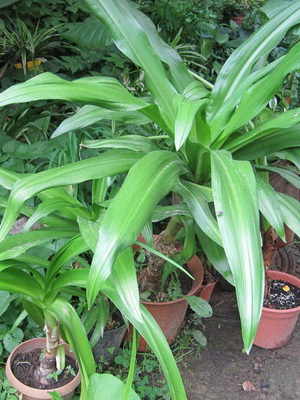
Caring for crinum at home is not too easy. During the period of growth and flowering, watering should be intense, but without waterlogging, in winter – moderate (once every 2-3 weeks). The top layer of the soil must definitely dry out before the next watering. When the plant has faded, soil moisture is reduced. At the same time, the soil should not be allowed to dry out, because the fleshy roots of the plant function all year round. Watering in the previous full-fledged mode is restored, as soon as a flower arrow appears. Irrigation water for home heat-loving krinum should be at room temperature.
Fertilizers for indoor flowers are applied twice a month. Top dressing is carried out exclusively during the growing season, 1-2 times a week. For this, liquid fertilizer for flowering indoor plants is taken, dosed in accordance with the instructions. The beginning of feeding is when young leaves appear, the end is after the flowering of the plant.
The bulbs are planted one at a time in a pot at half its size. Pots for planting young krinums are small – 13-15 cm in diameter. Crinum is transplanted no more than once every 3-4 years, using a ready-made flower substrate or the above mixture of earth and sand.
Reproduction occurs best in the summer: by babies that appear around the uterine bulb, or by seeds. The children are carefully separated from the main plant; it is imperative to treat the cut sites with crushed coal. Plant each onion in a separate pot, the diameter of which should be 9-12 cm. It is necessary to plant so that the upper part protrudes a third from the soil. Place the young bulbous krinums in a lighted place, moderately moisten the soil. The bulbs grow very quickly and fill the container. Therefore, a year later, the developing plants are transplanted into large pots (12-15 cm in diameter), after another year the diameter of the pots will grow to 15-17 cm. Phosphorus fertilizers are added to the soil.
Planting evergreen krinum in open ground and caring for it does not bring many difficulties: you just need to clear the ground of harmful plants, constantly make sure that it is loose, and do not forget to water systematically, reducing watering on days when there is no sun. In winter, you need to cover the plant from precipitation and bad weather – with a layer of peat, leaves or fabric.

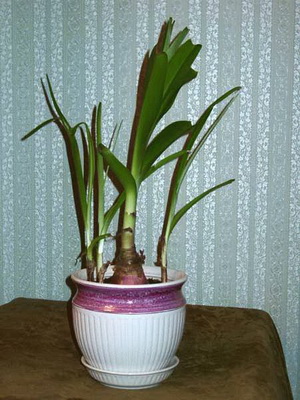
Planting an indoor flower called krinum in a new pot takes place annually up to 3 years of age. Adult specimens are transplanted once every 3-4 years. The best time for this is March, when growth has not yet begun. You need to transplant carefully, trying not to damage the roots. Damaged appendages should be removed along with unnecessary old soil.
In order for the information on planting and proper care of indoor flowers – an amazing krinum – to be complete, it should be added that adult plants need to change the topsoil every year.
Diseases and pests of krinum
With improper care, anthracnose may appear – dark spots on the leaves. This is usually due to elevated temperature or humidity.
Another disease is a “red burn”: red spots appear on the bulb and leaves. When treating a plant, you need to remove all damaged parts, treat the plant with Fundazol.
Of the pests, the amaryllis worm and the scale insect are dangerous. A weak solution of soap or insecticides will help get rid of them.
Failure to comply with the conditions during growing can lead to undesirable consequences: in the absence of light, a dormant period, and a lack of nutrients, the plant may not bloom. Excess moisture leads to decay of the root system.
